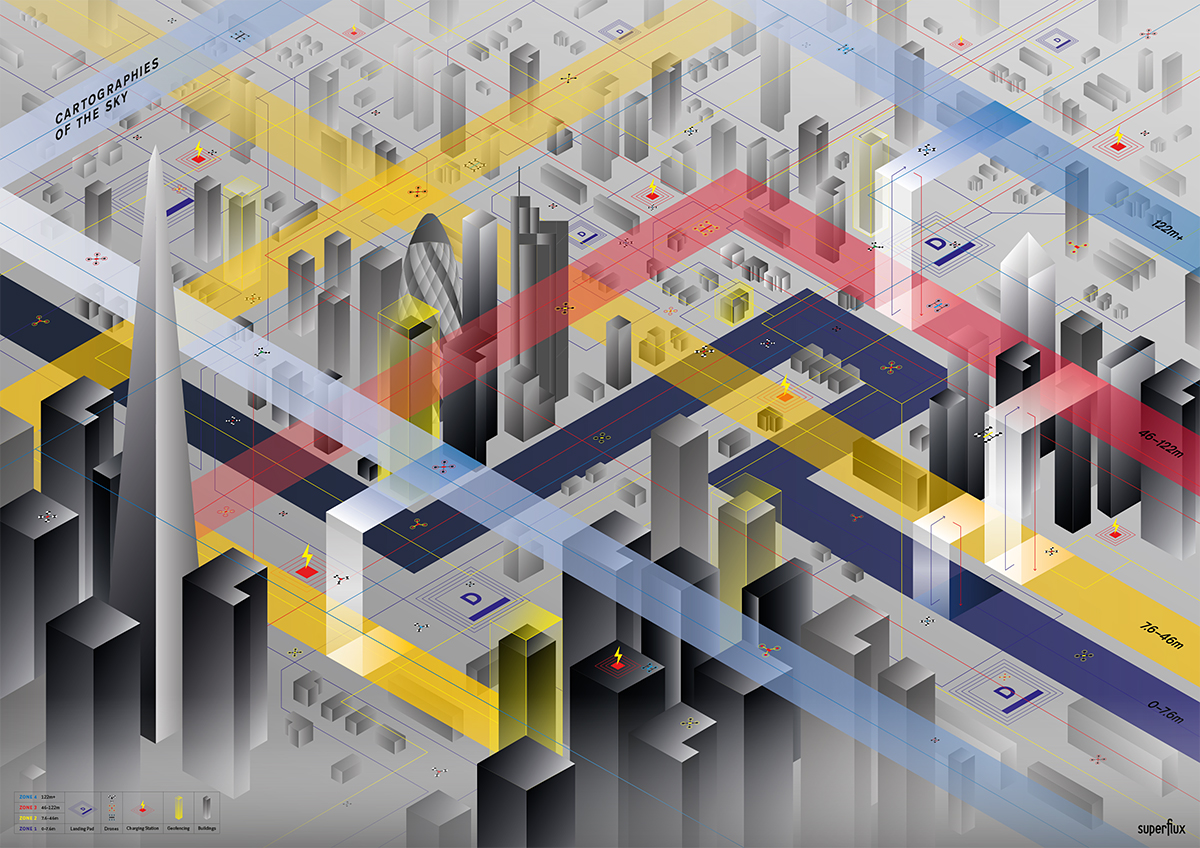
We respect your privacy. We use non-sensitive information such as cookies and device identifiers to insure that we give you the best experience on our website. You can agree to allow cookies or opt out.



“Cartographies of the Sky: A Speculative map of the city showing flight paths, zones, charging stations and geofencing.” Source: Superflux, 2015
As part of The Leverhulme Doctoral Centre for Aural Diversity (run by Professors Bill Davies, Sam Gregory, Alan Williams, and Katherine Yates) at the University of Salford, we invite applications to the interdisciplinary PhD research project titled “Aural Speculative: Futuring Autonomous Soundscapes of the Manchester Ship Canal.” This fully-funded PhD research explores sonic urbanisms and soundscapes as an extended sociotechnical and eco-infrastructural mode of capitalist extraction along the MSC strategic logistics corridor. It cuts across design and media studies, technoscience, STS, and philosophy.
Supervisors: (For inquiries, feel free to contact us)
Dr Fadi Shayya; e-mail: F.Shayya1@salford.ac.uk (School of Science, Engineering and Environment)
Dr Derek Hales; e-mail: D.J.Hales@salford.ac.uk (School of Science, Engineering and Environment)
When & How to Apply: Applications are due by the end of February 2025, and the PhD begins in September 2025. Visit the LAURA website for information on eligibility and application procedures.
The research proposal sets out to explore sonic urbanisms and soundscapes as an extended sociotechnical (Latour, 2005; Simondon, 1958/2017) and eco-infrastructural (Bélanger, 2009; Easterling, 2016; Morton, 2010) mode of capitalist extraction. It examines how global infrastructure and regeneration projects like Ocean Gateway in the Northwest of England reassemble and spatialise an urban economy of diverse aural experiences.
Using the Manchester Ship Canal (MSC) corridor as its empirical site, the proposal develops a design fiction (Hales, 2013, 2025) for a speculative logistics scenario where this strategic corridor transforms into an autonomous robotic geography—a multi-scalar landscape where autonomous aerial and surface vehicles operate independently. The MSC corridor is viewed not merely as a site of commerce and transportation but as an anthropological (Schober & Leivestad, 2022) and communicative space (Mattern, 2023; Peters, 2015; Starosielski, 2015), embedding material (Hutton, 2020), logistical (Cowen, 2014; LeCavalier, 2016), and technological (Nesbit & Waldheim, 2022; Shayya, 2021) trajectories within its environment. Through this lens, the corridor is conceived as a site for futuring sonic design fictions by “terraining” (Shayya, 2021) the prospects and potentialities of aural experiences in urban plans. This methodology aims to understand and anticipate the impact of extractive soundscapes on surrounding human and non-human populations.
The inquiry proposes hybrid methods for its research design to formulate an epistemology of “aural technics.” Although the specific techniques are yet to be determined, Shayya’s work on “terraining,” a process where obstacles become the means of realisation and Hales’s prior research on listening in cyborgian geographies (2011), noise and sonic fiction (2012), noise machines in speculative design (2015), and genetic algorithms and listening to machine noise (2016) provide points of departure.